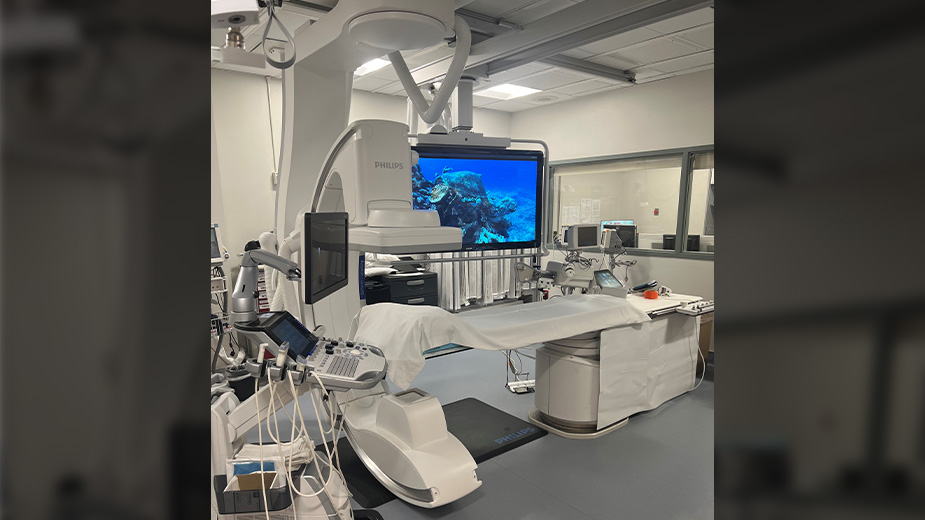St. Joseph Warren Hospital Opens Cardiac Cath Lab
WARREN, Ohio – Patients in need of diagnostic cardiac catheterization procedures can now be treated in a newly opened, state-of-the-art catheterization lab at Mercy Health – St. Joseph Warren Hospital.
“Coronary artery disease is the leading cause of death in Americans,” said Dr. Jill Uberti, emergency medicine physician at St. Joseph Warren Hospital. “Cardiac catheterization is a minimally invasive study used to best identify blockage. Having the ability to diagnose this type of heart disease is wonderful for our community.”
A cardiac catheterization lab, also known as a cath lab, is a specialized area used for minimally invasive tests and advanced cardiac procedures. During a cardiac catheterization, a catheter, or a long, thin, flexible tube, is inserted into a blood vessel and threaded to a patient’s heart, allowing specialists to perform various tests and treatments.
“Mercy Health – St. Joseph has a century-long legacy of providing the highest quality of care to those we serve, and we continue to expand on that legacy with growth in our clinical services,” said Charlotte Gardiner, president of St. Joseph Warren Hospital. “I am grateful to the team of physicians, technicians and leaders who worked tirelessly to ensure that area residents have these services close to home. The medical team at the hospital is [composed] of skilled specialists with extensive experience in providing cardiac care.”
Cardiac catheterization is ordered for patients exhibiting signs of heart disease, including chest pain, shortness of breath and/or pressure or pain in the shoulders, arms, jaw, neck or back.
Other reasons a cardiac catheterization may be ordered include:
- To evaluate chest pain on a patient recovering from a recent heart attack.
- To evaluate a heart attack that caused major tissue damage.
- To evaluate abnormal electrocardiogram results that indicate heart disease.
- To look for problems with heart valves.
- To view the shape of a patient’s heart and the heart chambers inside it to identify heart defects prior to heart surgery.
- To measure oxygen and blood flow in the heart and evaluate how artificial heart valves are functioning.
Published by The Business Journal, Youngstown, Ohio.



